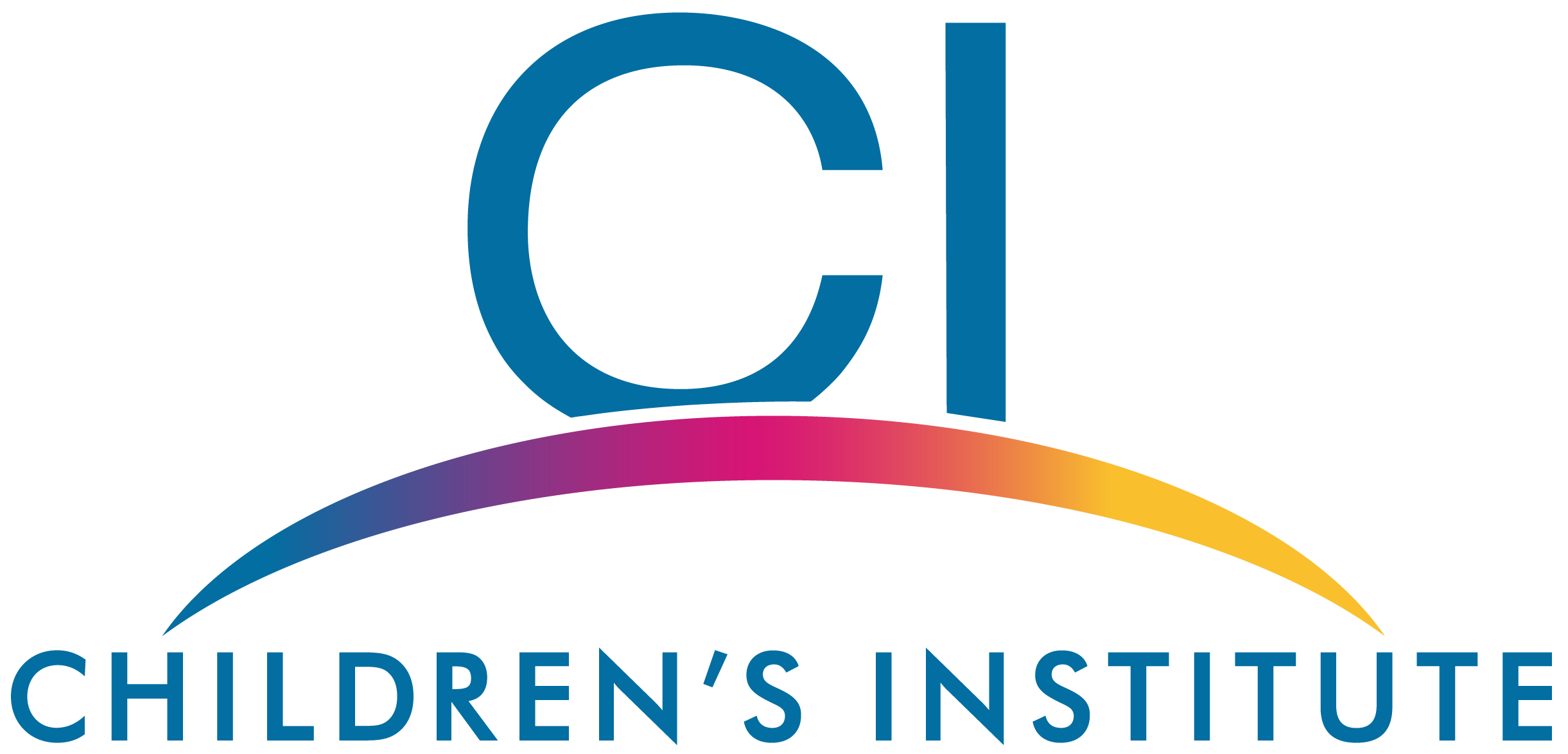SPRING 2020
Ways to Connect with Students
Primary Project teams nationally and across New York State have shared amazing ways of how they continue to connect with students. Below is a list of ideas as well as some pictures and templates that schools and organizations have shared with us. We hope that you find them useful.
1. Send a handwritten notecard by mail to Primary Project students letting them know you miss them and are thinking about them.
2. Send a weekly letter home to Primary Project students.

–Kara Rutledge, Child Associate, Cooperstown Central School District, Cooperstown, NY.
3. Sent a note home to students with a coloring sheet and a chance to write back to you or another friend.
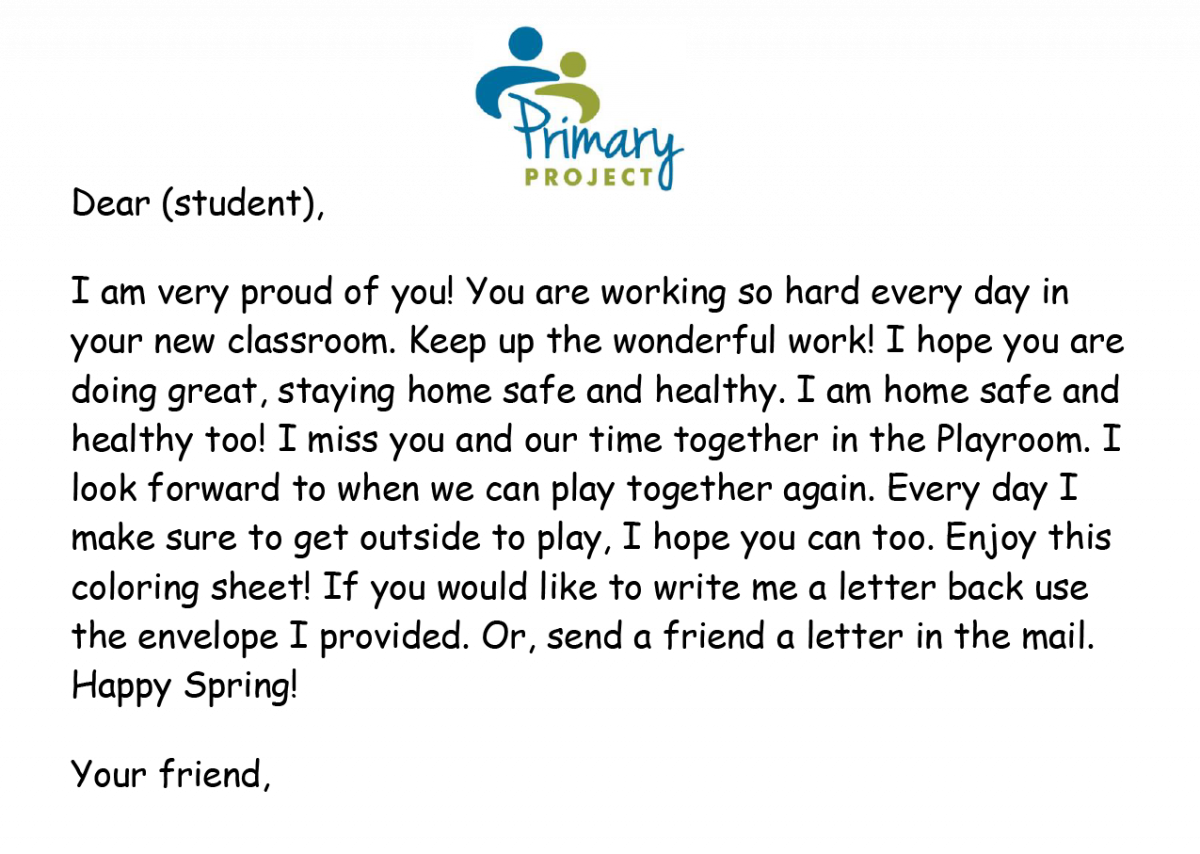
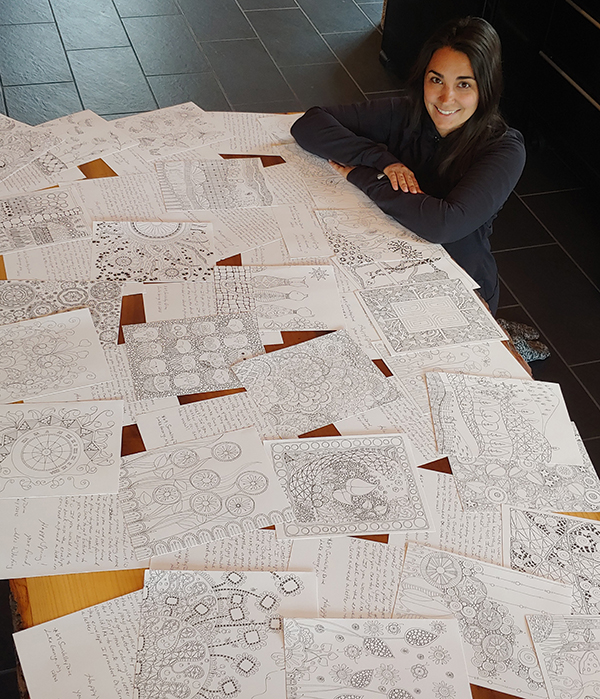
–Lynsey Whiting, Child Associate, Lake George Elementary, Lake George, NY.
4. Partner with teachers to join a class via Google Meet (or Zoom, etc.) so all students are able to see you and you can say “hi”!
5. Use one of the blank templates to send students a quick note, and if you'd like, a picture of yourself to let them know you are thinking of them.
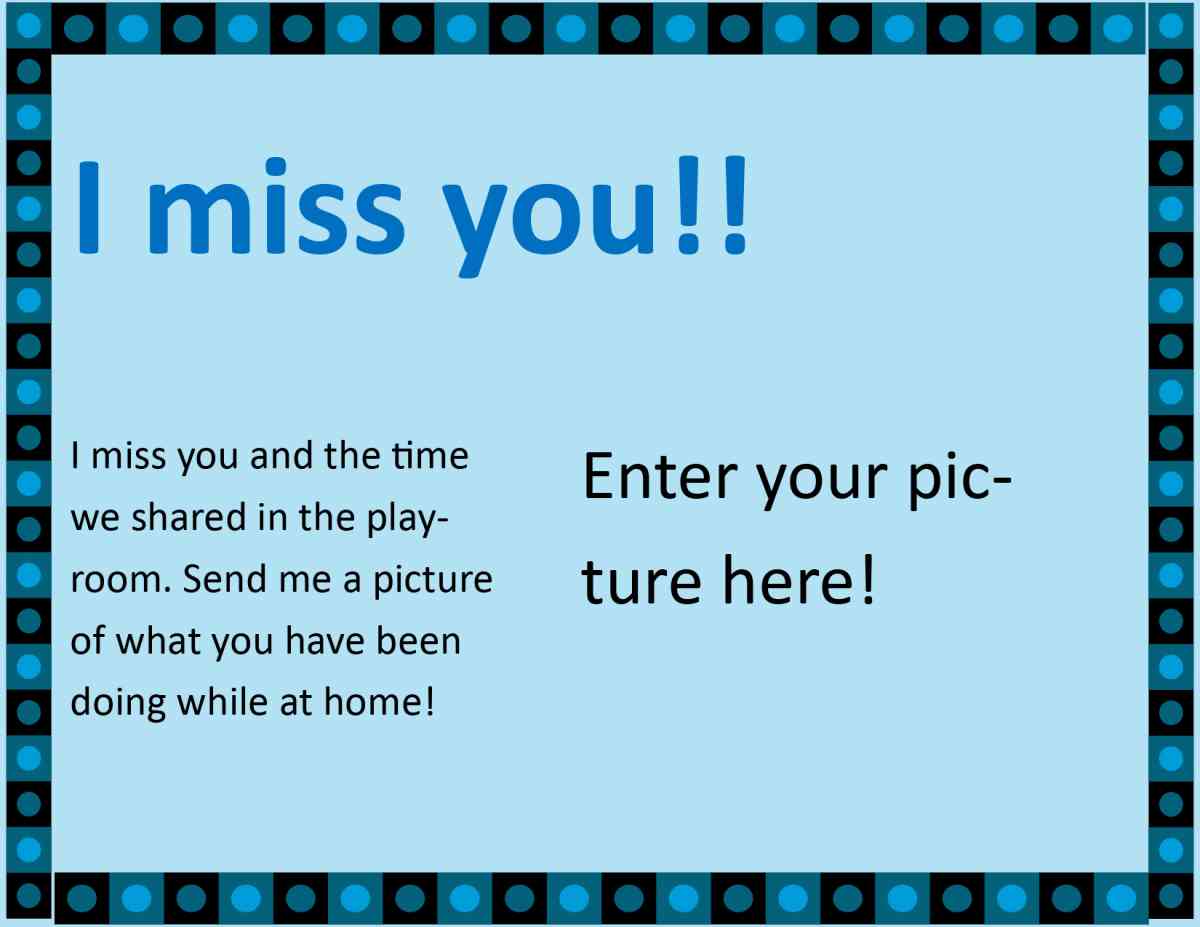
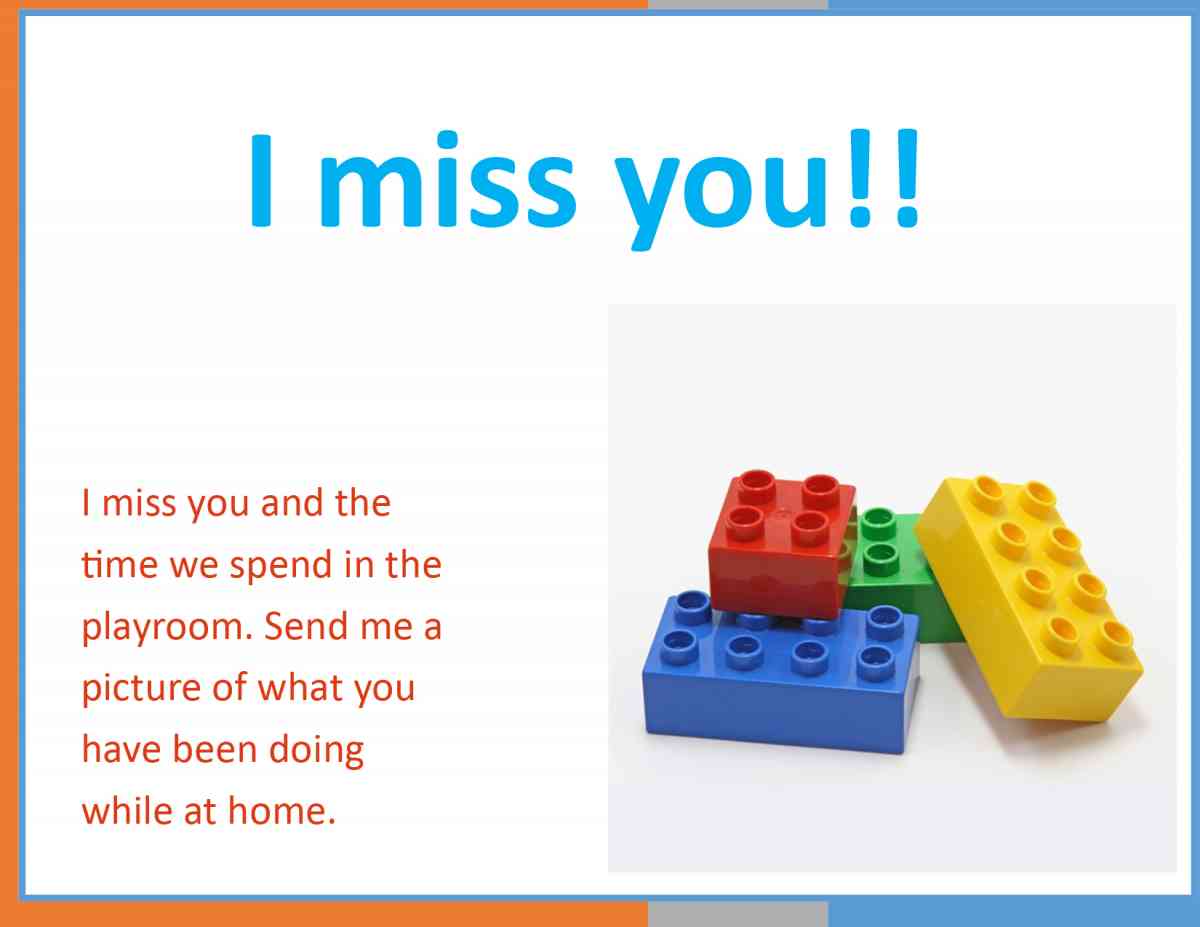
–Sent from Boys Town, South Florida
6. Try a “virtual” session (using Zoom, WebEx, etc.) to connect with students. Check with your Primary Project supervisor regarding any district policies to be aware of (i.e. parent permission, etc.) before you get started and be sure both of you connect weekly so that you have opportunities to “debrief” sessions in supervision. The same principles of child-centered play skills can be used even though the environment is different on the other side. See this quote from Barbara Ryder, a child associate in South Florida: “I had my first meeting with a child through WebEx! The child talked non-stop (his goal is assertiveness). He showed me stuffed animals and two fish tanks and putty. Mom was there, and I am glad she was, as she had questions about Primary Project that I could answer. This was great because parents don’t usually come to the meet and greet or open house.”
7. Design your own communication similar to this one.
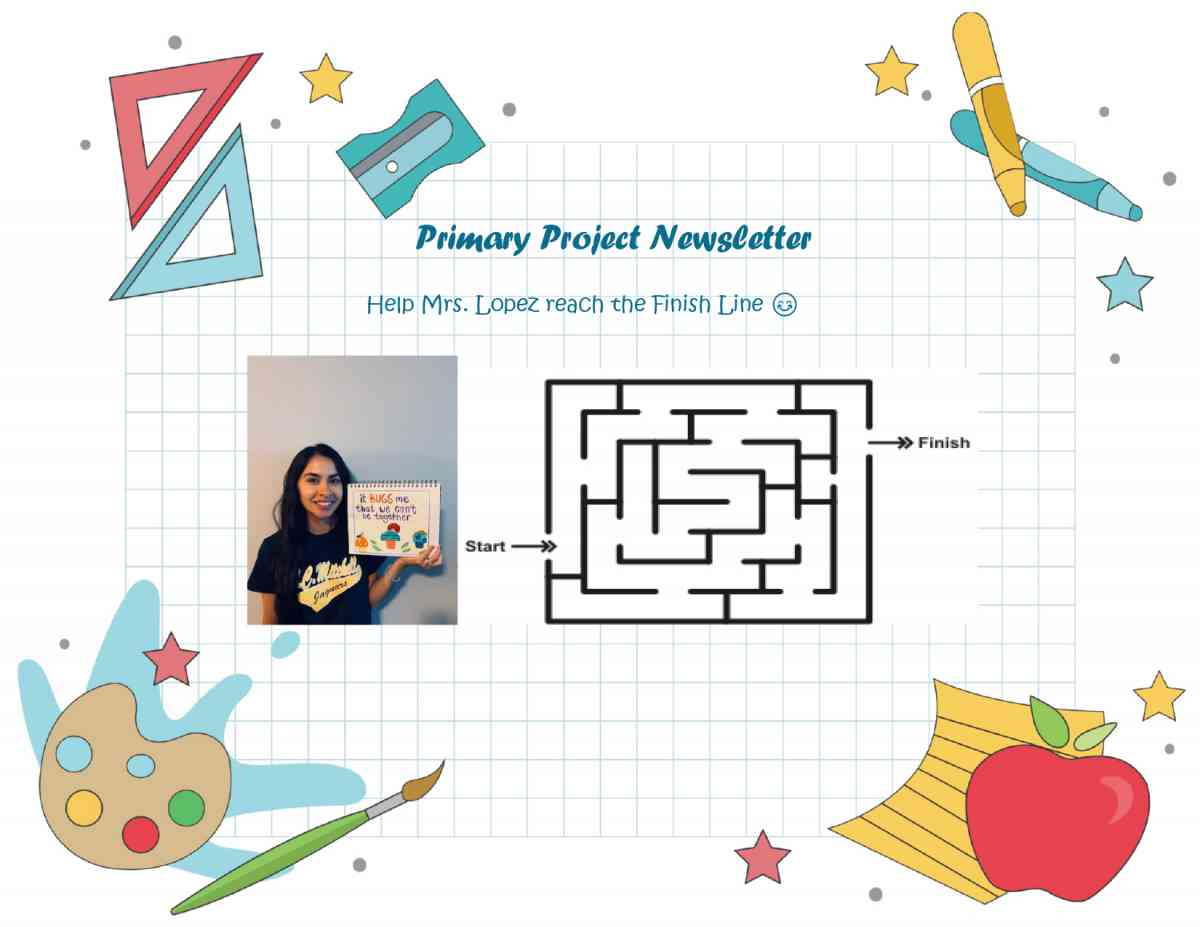
–Liz Lopez, Child Associate, JC Mitchell Elementary, Boca Raton, FL.
We love to hear from you! Feel free to reach out and let us know how things are going. Also, if you develop something that works and would like to share, please send Lynn Smith your thoughts.
Announcing a New Report in COMET
Exciting news – there is a new report in COMET! It is called the T-CRS Percentile Report and is located under tabs Admin > Instruments reports. Look in the section ‘Group Data Reports’ – it’s the last report on the list.
So why is it there? We heard from multiple Primary Project teams requesting a Pre/Post report that actually focused on students in the domains with pre percentiles at or below the 30th percentile – children ‘At Risk’ (16th to 30th) and at ‘High Risk’ (0 to 15th).
What does it (or can it) do? When identifying Primary Project participants, the T-CRS is used as a tool to help facilitate this identification process. Typically, children with one or more scores in the ‘At Risk’ area are selected. This report allows you to view the pre/post results by domain (Task Orientation, Behavior Control, Assertiveness, and Peer Social) for only those children. Students above the 30th percentile who do not present needs are not included. The report defaults to showing graphs for all domains with a percentile range from 0 to 30. Similar to other reports, you can filter on: School, Grade, and Group (such as Cycle 1 or Cycle 2). Additionally, one or all domains can be selected and the percentile range can be modified. You might want to see only children falling between the 15th and 30th percentiles. It’s your choice! Another welcomed feature of this report is that it lists the students with their respective pre, post, and difference scores.
Primary Project teams also requested a One Time report that only lists children falling in the ‘At Risk’ range to aid in the selection process. The report does just that! For example, after fall screening is completed, select ‘One Time’ in the filter and the date range in which screening occurred – e.g., 10/1 to 10/30. The report defaults to listing all students that fall at or below the 30th percentile in any domain. Again, the percentile range can be adjusted to suit your needs.
We hope you find this report useful, possibly in other ways than what is mentioned above. Please visit the new report and send any questions or feedback to Geri Cone.
Enjoy!
Bringing the Lessons Home
Parenting during this pandemic
Over the last few weeks, I have had the privilege and opportunity to connect with Primary Project teams across New York State and nationally. The consistent message heard is that parents are overwhelmed with resources and information both related to COVID-19 as well as their children’s schooling expectations. Parents have also assumed various roles in addition to the role of parent and caregiver. We have taken on less familiar roles such as educator while simultaneously refining our roles as mediator, head chef, and activities coordinator. It is our hope that as parents during this time, you are able to find some balance, a daily rhythm, and recognize that some days have a bit more tempo than others! Over the last several weeks and on multiple occasions, I have found some contentment in comparing our current state of shelter in place, work from home, and helping to support learning and academics to a buffet of sorts (you get to decide whether it is dinner, brunch, salad bar, etc.). We have “shown up” to this buffet and notice what is available to us. Despite the many choices, we are likely to pick the things that keep us healthy (maybe) and are familiar. At times, our curiosities may be peaked and we might leave our comfort zone to try out something new. No matter what, we can always revisit the buffet if we want, have another look, and take more away. For me, this comparison has been similar to parenting during this pandemic. With such an immense amount of information, we have had to filter what is most critical. What do I need to know to keep myself and family healthy? How do I continue to keep myself and my family healthy both physically and emotionally and at the same time remain connected with others, while maintaining physical distance? How do I welcome new things, new learning and when am I ready to pick up some more from the buffet? What do I tend to gravitate towards and is that helpful for me?
Each day brings us an opportunity to graze over the buffet. During this time, play and being “playful” continue to be vital elements of everyday! The simplicity of playing a game together (indoors or outdoors), working on a puzzle, taking a hike, or baking continue to support our relationships with our child(ren) and help us stay balanced. Enjoy the buffet!

COVID-19 Resources for Families
Children’s Institute knows that children’s social-emotional health is greatly impacted by times of anxiety and the news about COVID-19. Visit our resources page for guidance on how to share information such as this with young children as well as other useful topics to help children and their families navigate through the current situation.
Conference 2021
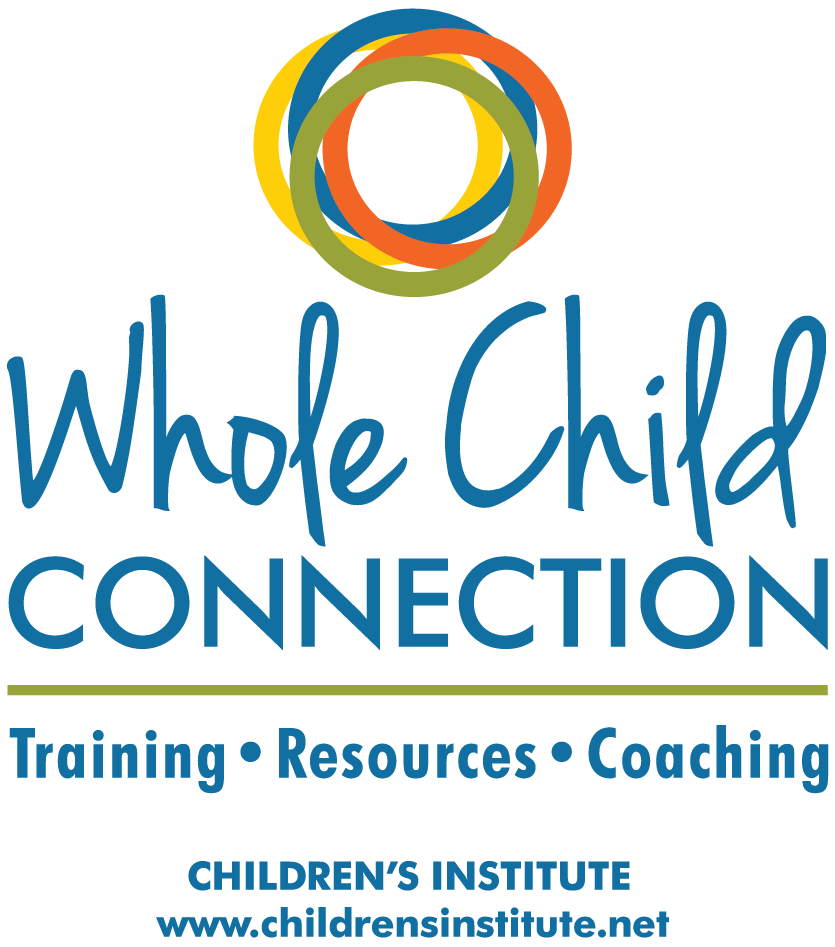 The Whole Child Connection Conference has been postponed to October 2021. Please check back for updates on the conference. We are committed to continuing to offer information, resources, and training throughout the coming months that are responsive to our current situation. We look forward to partnering with many of you through those opportunities.
The Whole Child Connection Conference has been postponed to October 2021. Please check back for updates on the conference. We are committed to continuing to offer information, resources, and training throughout the coming months that are responsive to our current situation. We look forward to partnering with many of you through those opportunities.
